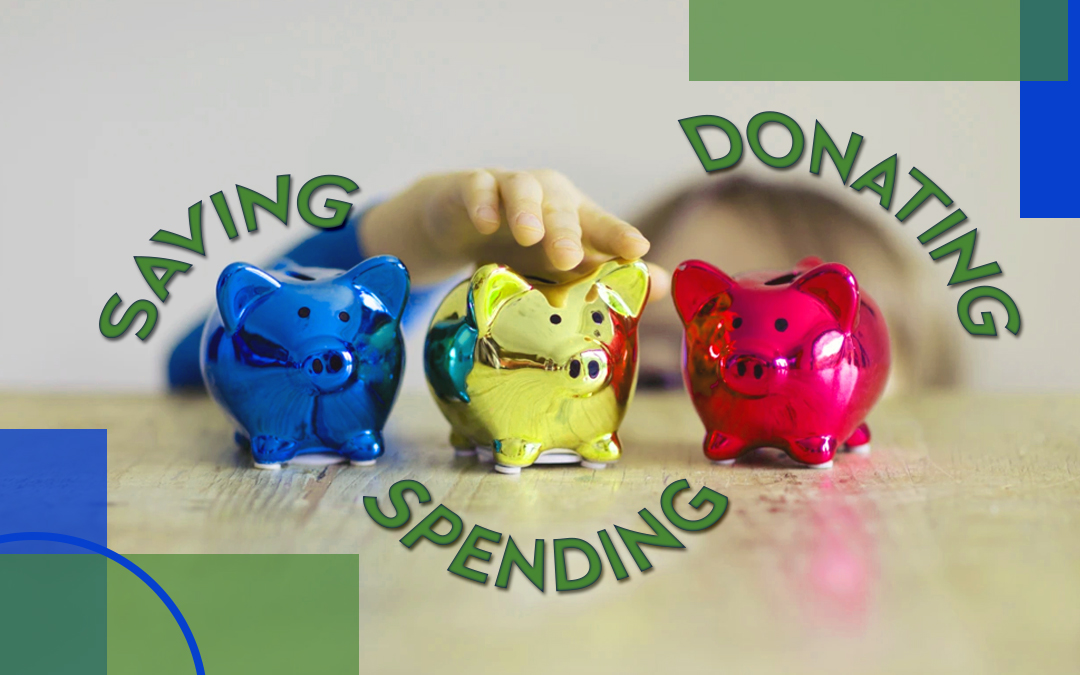If it’s true, that we all want what’s best for our kids, then talking to them about money should be a priority. Research shows that financial literacy makes you less vulnerable to fraud, can increase your confidence, and help you stay debt-free. Of course, this is what we want for our kids! What you cover in your discussions and how in-depth your conversation will be a matter of age and level of understanding, but you can start to build your child’s relationship with money early.
Little Ones
Parents suggests introducing the topic of money in fun ways. If you have young children at home, you can start by teaching them the names of coins and bills. Be sure to monitor them so the coins don’t end up in their mouths. You can get started on teaching numbers and the concept of counting as well.
Preschool Age
You can bump up the learning with your preschooler by taking them to the grocery store and pointing out the cost of products they know and like. CNBC contributor, Sharon Epperson, recommends adding financial buzzwords like earn, spend, and save to your young child’s vocabulary. Explain how you work to earn the money that is used to buy the items your family needs.
At home, encourage little ones to play pretend restaurant or store with fake money to emphasize the concept of paying for a service or product. At the very least, they will learn that they need money to buy things. Now teach them it doesn’t grow on trees!
Elementary School
Counting change
If you start a change jar at home, be sure to bring the kids along to dump the change into a counting machine. It will be a big hit when they find out the total sum! Another option is to purchase coin wrappers and have the kids count the coins needed to fill up wrappers to reach $10, $5, $2, and $0.50. Those rolls can be deposited, which brings us to the bank.
Young Savers
Let the kids tag along for trips to the bank. Explain why you’re there and why it is important to save money. It could be the right time to mention emergency savings in not-so-scary situations they can understand. Ex. If our refrigerator breaks, we have money saved in the bank to buy a new one. Let them feel like a big kid by starting their own savings account. The money your kiddo earns for chores, good report cards, or monetary gifts can be deposited into their savings account. Watch their money grow alongside them.
Spend, Save, Donate
Depending on their level of understanding, you can teach your children a common budgeting method, add some fun to it, and tweak it as you see fit. Adults follow the 50-30-20 rule and it entails dividing money into the following categories – 50% needs, 30% wants, and 20% savings/debt repayments. There are variations of this method for children. The U.S. Mint calls it Spend, Save, Share and even provides instructions and a printable activity page for young savers. Because parents already provide for the needs of their children, the technique is modified and includes a sharing/donation designation to teach children to help others. Simply have your children set up three jars or containers. The first is for money they can spend, the second is money they save for a later purchase, and the last is money they can donate to help a person in need. Showing even the youngest savers that they can help another promotes empathy and gives them the warm, fuzzy feeling that comes with being a good human being.
Delayed Gratification
Soon enough, your kiddo will ask for something that you don’t want to buy. This heated exchange may not be the time or place to discuss needs vs. wants or delayed gratification, but it is important to explain these concepts. It might be best to tackle them during peaceful shopping moments or way before you even hit the store. Encourage your child to save money to make more meaningful purchases in a few months or a year (delayed gratification). You can even match their savings to keep the positive motivation going.
Comparison Shopping
If your child has saved money to buy a toy, let them take part in comparing the purchase price of that item from various stores. How much is this at Walmart? Target? Amazon? This shows that getting the best price for your dollar is important. Soon enough, they too will become savvy comparison shoppers.
Middle School
Spending Limits and Saving Goals
By the time middle school rolls around, your child may already have some grasp of spending limits. You may have already set boundaries, allowing them to buy an additional snack at school but only one per day. If they earn money doing chores or jobs around the neighborhood, get them to write out what they expect to earn in a month. Let them set goals for savings. Help them determine what they can spend and donate, while still keeping their savings goals within reach.
Promote and Reward a Good Work Ethic
Children shouldn’t get paid for simply existing in your home. They should be taught not only to complete their chores but to do them well. If you tell them to clean their room and find dirty laundry piled up under their bed, this is not a job well done. To combat those shortcuts, consider offering a pay scale. First, set clear chore goals (dirty clothes in the hamper, furniture dusted, bed made). Let them know that there is a greater reward for doing a good job. Those who check off all the To-Do’s get the highest pay – say $10. A fair job will get you $5… and so on.
High School +
Financial Literacy Education
By now, your child has picked up some money management skills, but this is no time to slow down the learning. In fact, you should step up your game because soon enough they will be on their own. As of 2023, only 8 U.S. states require high school students to take a semester of personal finance education before graduation, while 14 more are in the midst of implementing such requirements. This means a lot of high schoolers will leave the nest relying on what they’ve learned from their parents.
Needs vs. Wants
If you’ve engaged your kids in financial discussions early on, the needs vs. wants conversation has likely already come up but it is a good age to go over what that really means. Clothing is a need but maybe not the designer variety for every piece you own. Food is also a need but that doesn’t mean you have to order out every night. Discuss these shades of gray purchases so your teens don’t blow through their spending money.
The Working Teen – Understanding Taxes
Teens who decide to take on employment may have no trouble calculating their hourly rate against the hours they work, but be sure to inform them of income tax before they receive that first paycheck. You don’t want them to become discouraged when their check amount is less than what they expect. Explain that Gross Income is what they have before taxes and Net Income is the actual amount of money they’ll receive.
Credit Cards – Benefits and Dangers
First credit cards can be dangerous if not properly explained to your child. It’s great to start building good credit history, but the reality is credit card purchases can morph into insurmountable debt rather quickly. If you’re helping them choose their first card, hit home these important tips.
- Find a credit card with the lowest APR (interest and fees).
- Keep purchases to a minimum.
- Pay off the credit card every month.
- Set a monthly spending limit for credit card usage, one that is easy to pay off monthly.
For more information, Great!Schools.org covers these tips and more.
There are starter credit cards out there that are teen-friendly and have low spending limits. You can also get a card that requires a security deposit to open it, which serves as your credit limit. Discover it Secured Credit Card is one such card for those interested in building credit. Your credit line will equal your deposit amount (min. $200). This gives your teens the freedom to make spending choices and gives you the peace of mind that their spending can’t get too out of control.
Money Wise
Help your child develop a healthy relationship with money by giving them the knowledge they need to make good financial choices. Offer guidance to help them stay on task in their spending, saving, and donating efforts. The habits they learn now will benefit them well into adulthood.


